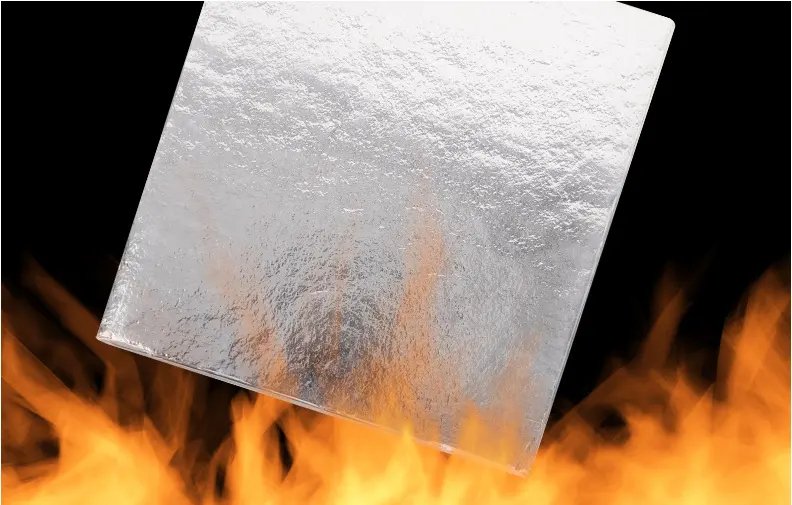Lead the new era of building insulation - A comprehensive analysis of ultra-thin VIP vacuum insulation panels
As a new-generation material for ultra-low energy buildings, the VIP vacuum insulation panel (VIP) leads the shift toward thinner, smarter, and greener thermal solutions. This article examines its breakthrough performance in thermal conductivity, fireproof safety, space efficiency, and structural longevity. Through five dimensions—core features, application fields, construction methods, product advantages, and future trends—it reveals how VIP integrates multiple technologies to support buildings, cold chain logistics, and high-temperature industries. With ultra-low thermal conductivity (≤0.002 W/m·K), Class A fire resistance, and life-cycle durability, VIP is revolutionizing the insulation industry and accelerating the future of green infrastructure.

I. Extreme Thermal Conductivity: Ultra-Low Energy Transfer Material
VIP achieves thermal conductivity below 0.008 W/(m·K)—industrial grades as low as 0.002 W/(m·K).
Compared to traditional insulation:
6–8× better than EPS
4–5× better than XPS
3.5× better than PU foam
Its nano-porous matrix and vacuum barrier enable near-zero conduction, rapidly locking in both cold and heat.
II. Ultra-Thin & Lightweight: Saving Space and Costs
Available thickness: 5–35 mm (only 1/5–1/8 of traditional insulation).
Reduces wall thickness by 2–3%, increasing usable floor space by over 2%.
Lightweight structure lowers wall stress, minimizing the risk of detachment in exterior wall cladding systems.
III. Inorganic Fireproofing: Class A Safety Assurance
Made from fully inorganic components, meeting Class A1 fireproof standards.
Ideal for high-rise buildings, public spaces, and fire-critical areas.
Prevents combustion risks from the source, ensuring maximum passive safety.
IV. Ultra-Long Lifespan: As Durable as the Building
Strong adhesion with mortar layers prevents cracks, seepage, and detachment.
Low thermal expansion avoids shrinkage issues common in organic insulations.
Weathering resistance ensures lifespan matches the building's structural life.
V. Application Scenarios
1. Building Envelope Systems
Applicable in thin-coating or tile-finished external wall insulation systems.
Also integrates with curtain wall insulation solutions for residential and commercial use.
2. Roofs & Floors
Ideal for inverted flat/sloped roofs, upright roofs, and flooring systems.
Seamlessly connects to waterproofing and slope layers, preventing thermal bridges.
3. Cold Chain Logistics
Operates stably from –40°C to +120°C, ideal for high-end cold chain boxes.
Maintains temperature variation within ±1°C for pharmaceuticals, seafood, and perishables during long-haul shipping.
4. Industrial High-Temperature Insulation
Withstands temperatures up to +650°C.
Used in boilers, chemical plants, pipes, and metallurgical furnaces.
Customizable shapes allow for seamless coverage of complex equipment surfaces.
VI. Construction Technique Overview
Base Preparation: Surface must be clean, solid, and dust-free.
VIP Panel Bonding: Use designated mortar, stagger panel seams, gaps ≤1mm.
Anti-Crack Mesh Embedding: Fiberglass mesh is embedded in the plaster layer.
Finishing Layer: Supports real-stone paint, tiles, or stone cladding.
Final Inspection: Check adhesion, fire rating, verticality, and flatness.
VII. Product Advantages & Highlights
Space Efficiency: Saves real estate with ultra-thin design.
Reusability: Over 70% recovery rate; recyclable post-demolition.
Eco-Friendly:
Production consumes 40–70% less energy than organic panels.
For every 10,000 m²:
Saves 40 tons of oil
Cuts 120 tons of CO₂
Prevents 20 tons of white pollution
Energy Savings: Reduces HVAC energy loss by over 50%, yielding ROI in 1–2 years.
Multi-Use: Applicable across civil, industrial, and cold-chain systems—truly “one board, multiple functions.”
VIII. Future Outlook
With increasing pressure on buildings to reduce carbon emissions, VIP is evolving in three major directions:
Smart Monitoring: Embedded chips for real-time heat flow and temperature tracking.
Integration with Renewable Tech: Combines with photovoltaic systems and intelligent façades to build net-zero carbon smart buildings.
Industrial Upgrades: High-temp versions (up to 800°C+) tailored for extreme operational environments.
Conclusion
The VIP vacuum insulation panel represents the pinnacle of modern insulation: ultra-thin, fireproof, durable, and ecologically responsible. It empowers architects, engineers, and builders to realize space-saving, cost-effective, and carbon-conscious solutions—without compromising safety or performance. Whether in high-rise buildings, industrial facilities, or cold-chain systems,VIP stands ready to lead the next generation of global insulation technology.
LATEST NEWS
Why is aerogel blanket the first choice for cost reduction and efficiency improvement?
2025-11-05
Durability and Performance of Aerogel Thermal Insulation in Harsh Environments
2025-11-04
Aerogel Sheet Solutions for Industrial Thermal Insulation Applications
2025-11-04
Aerogel Coatings: Classification, Core Applications, and Safety Protection in Future Life
2025-10-26
Polyurethane Foam Insulation Board Supplier Selection Criteria and Product Choices
2025-10-15
